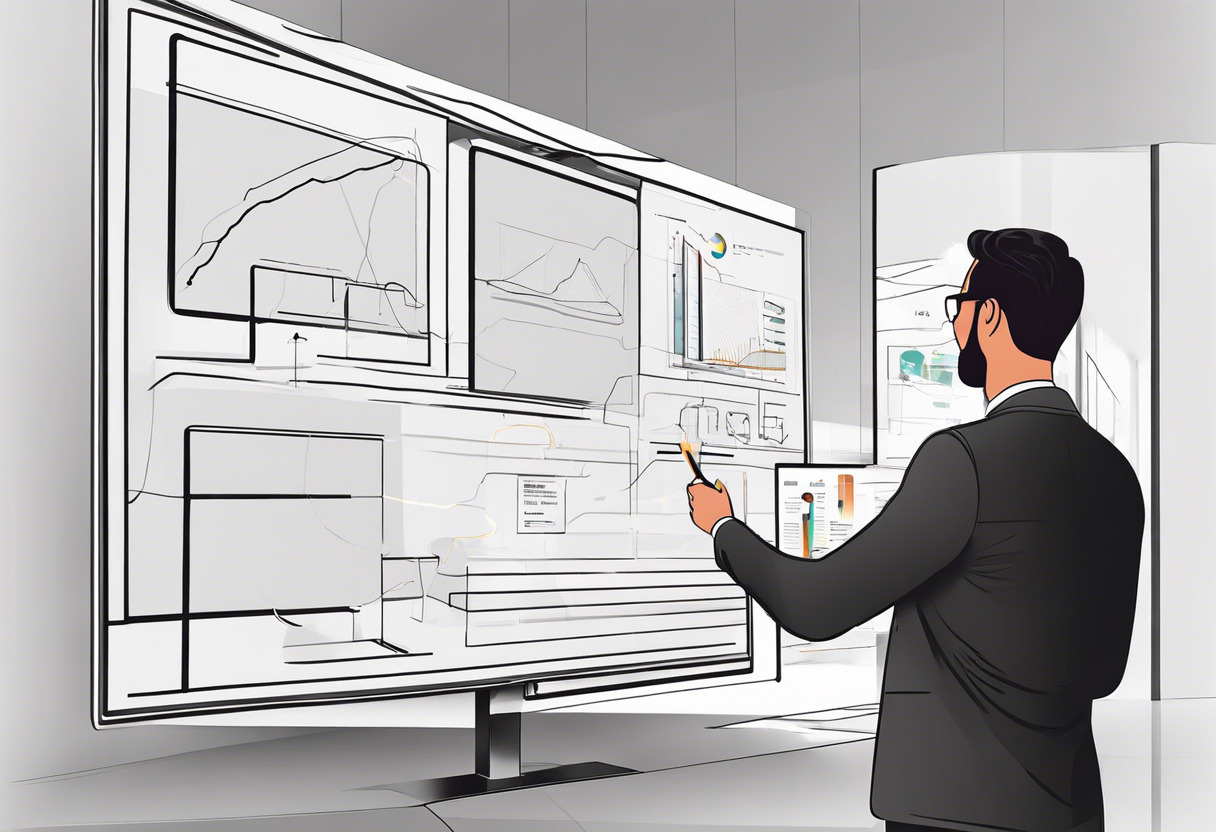Between Augment and Adobe Aero, Augment is ideal for cross-platform, feature-rich AR experiences necessitating customizable elements and data-driven interaction. However, for creators seeking a no-code approach with seamless Creative Cloud integration, Adobe Aero is the fitting choice.

Key Differences Between Augment and Adobe Aero
- While Augment delivers AR experiences on multiple platforms, Adobe Aero is currently limited to iOS devices.
- Adobe Aero’s integration with Adobe Creative Cloud enhances workflow while Augment’s offerings cover a broader spectrum of use-cases, including retail, marketing, healthcare, and more.
- Augment requires hardware components like processors, sensors, display, and input devices, whereas Adobe Aero cuts the curb, necessitating no coding or 3D design skills.
- Both provide interactive experiences, but Augment showcases data-driven interactions and Adobe Aero focuses on asset placement, rotation, and scale with intuitive gestures.
| Comparison | Augmented Reality (AR) | Adobe Aero |
|---|---|---|
| Functionality | AR overlays digital content onto real-world setting | Adobe Aero is a AR creation tool, requiring no coding/3D design |
| Use | Varied – marketing, healthcare, computing, business applications, entertainment | Creation tool for augmented experiences without using coding |
| Integration & Hardware Requirement | Requires hardware components such as processor, sensors, a display and input devices | Adobe Suite, mainly Photoshop and Illustrator |
| Collaboration & Accessibility | Improves accessibility, safety and collaboration in various fields | Adobe Aero supports App Clips for enhanced sharing capabilities |
| Interaction Mode | Interactive, user experiences real world environment with overlaid digital elements | Interactive experiences, behavioral content triggers, object motion paths |
| Viewing Mode | Smartphones, tablets, AR glasses, possible future AR contact lenses | Preview mode for testing, interaction and sharing progress |
| Industry 4.0 Ecosystem Element | Part of a cloud-connected ecosystem including big data, automated robots | Seamless integration with Adobe Suite as part of content creation process |
| Limitations | Hardware dependent; AR quality and performance depend on device capabilities | Limited to iOS devices; App audio issue on social media uploads, known to fail to open projects necessitating backups |
What Is Augmented Reality (AR) and Who’s It For?
AR is a transformative technology that augments real-world experiences with digitally generated sensory inputs. It’s designed to highlight specific features of the physical world and provide valuable, accessible insights. AR overlay’s visuals, sound, and other data onto our reality to augment one’s experience.
AR is for anyone and everyone. It finds utility in array of applications from mobile computing to healthcare, and retail to entertainment. AR is also an empowering tool for businesses, providing them with innovative ways to promote their products/services, launch marketing campaigns, and collect unique user data.

Pros of AR
- Increases brand awareness and boosts sales with interactive experiences.
- Fosters effective collaboration in diverse fields, ensuring safer work conditions.
- Provides immersive user experiences, enhancing user engagement.
- Part of the evolving Industry 4.0 ecosystem, integrating with big data and automated robots for superior solutions.
Cons of AR
- Hardware dependent and requires complex integration of components for functioning.
- Different AR types could affect how images and information are displayed.
- Involves potential privacy issues with collection and use of user data.
What Is Adobe Aero and Who’s It For?
Adobe Aero is a robust AR creation tool designed for hassle-free and immersive AR development without the need for code or 3D design expertise. With its seamless integration with Adobe Creative Cloud applications like Photoshop and Illustrator, Adobe Aero is an ideal tool for creating real-world AR experiences.
Adobe Aero is suited for artists, educators, marketers, and anyone interested in creating engaging and interactive AR experiences. It simplifies AR development and is intuitive to use; its compatibility with Adobe Creative Cloud suite enhances workflows, making it a preferable choice for creatives.

Pros of Adobe Aero
- Simplifies the process of AR development, making it accessible for anyone.
- Offers intuitive controls for facilitating AR asset placement, rotation, and scaling.
- Seamless integration with Adobe Creative Cloud applications.
- Shares developments using App Clips, negating the need for Aero App installation.
Cons of Adobe Aero
- Available only on iOS devices, limiting its accessibility.
- Lacking advanced features offered by other AR platforms.
- Experienced issues like failed project openings have necessitated regular backups.
Augment or Adobe Aero: Which is the Superior Choice?
Choosing between Augment and Adobe Aero hinges largely on your specific use case and technical prowess. Let’s delve deep into the nuances of these platforms for various audience segments:
AR/VR Creators
Augment, with its rich flexibility and extensive implementations, is the clear winner for AR/VR creators. This platform’s manifold benefits include its applicability in retail, gaming, navigation, architecture, and defense.Its amalgamation with Industry 4.0 elements like big data and automated robots presents a valuable proposition.

Game Developers
For game developers, the choice is not as quite straightforward. Augment’s enhanced user experience with overlays of digital information on real-life environments is certainly enticing. However, the easier-to-master interface and features of Adobe Aero, including AR previewing and sharing, offer a compelling case for beginners who are stepping into the AR field.

Marketers and Educators
Adobe Aero takes the lead for marketers and educators due to its simplicity and compatibility with Adobe Creative Cloud, boosting workflows and fostering creativity. Not requiring any code/3D design knowledge makes Aero the perfect gateway for this segment.

Business Applications and Industrial Manufacturing
Augment triumphs in the realm of business applications and industrial manufacturing, largely because of its contribution to increasing brand awareness, boosting sales, and establishing safer work conditions. Its ability to visualize products in different settings is a major advantage.

Augment stands as the go-to technology for a comprehensive AR experience with its myriad applications, while Adobe Aero convinces with its user-friendly interface and no-coding-needed approach. For beginners and non-technical users, Aero might be the better choice, but advanced applications and immersive experiences could be better achieved using Augment.
Grant Sullivan
Content writer @ Aircada and self proclaimed board game strategist by day, AI developer by night.





